A Short History Of Anti-Ship Ballistic Missile Attacks
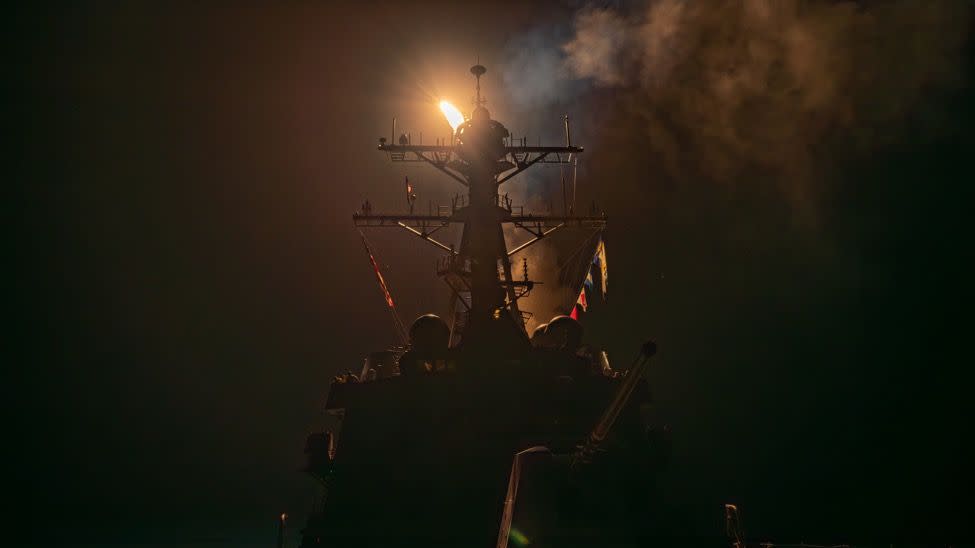
Over 100 Tomahawk cruise missiles and precision-guided bombs rained down on the military assets of Houthi militants in Yemen on Friday morning—a substantial retaliation by the U.S. and British military following over two months of continual Houthi drone and missile attacks on civilian and military shipping in the Red Sea.
The Houthis, who control most of western Yemen, had declared open season on supposedly Israel-linked shipping and escorting warships in the Red Sea in response to Israel’s war with Hamas in Gaza. Those waters are undeniably economically important, as 30 percent of the planet’s container shipping traverses through them.
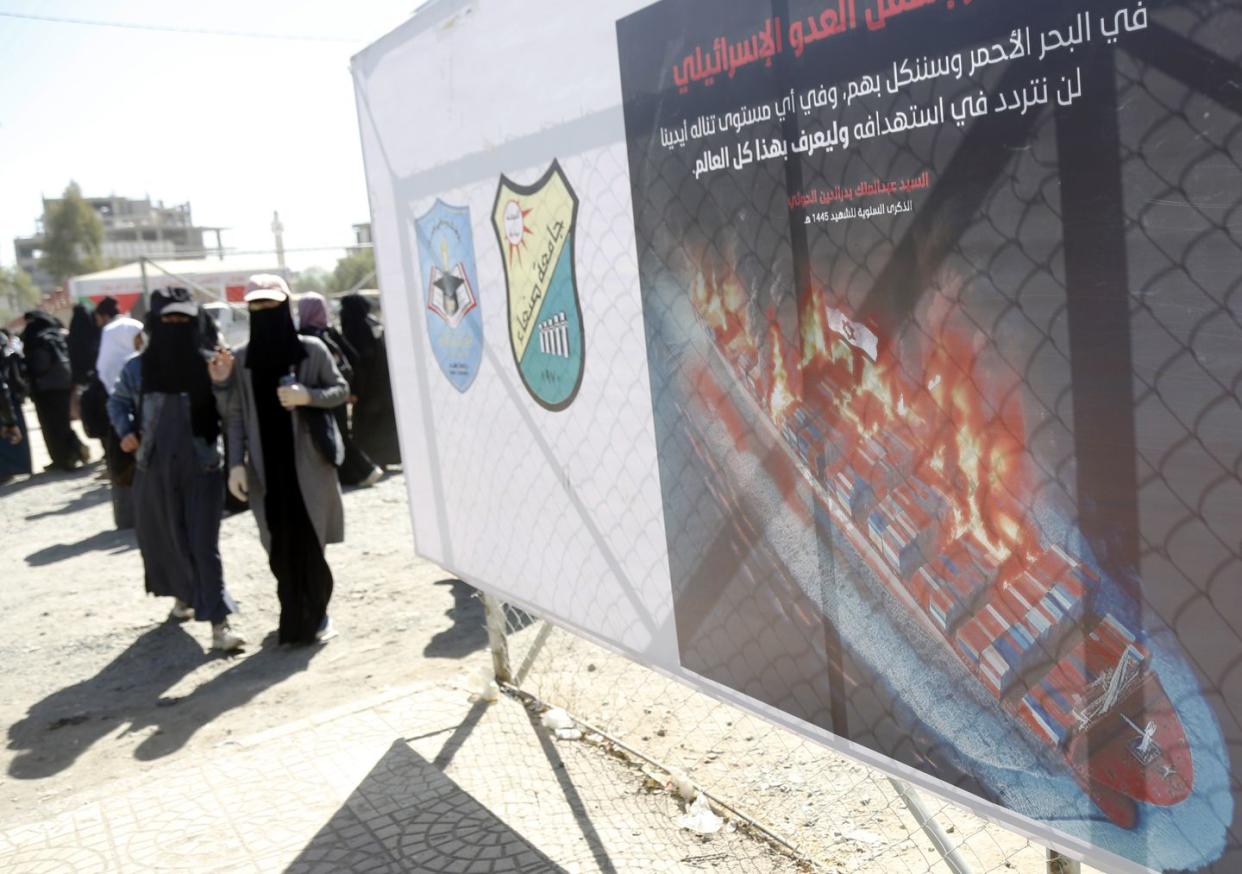
Of the 27 Houthi attacks targeting Red Sea shipping since October, none managed to hit U.S. or allied warships. But several did strike civilian ships—so far without causing any deaths or sinkings.
The U.S. and British strike Thursday evening hit 60 targets at 16 different locations in Yemen, including coastal radars and command and control facilities used to coordinate attacks, as well as missile and drone storage depots, launchers, and production facilities. The Houthis reported that five of their militants were killed in the attacks and vowed retaliation.
Footage reporting to show U.S. and British Airstrikes earlier against Houthi Targets within Sana'a International Airport in the Yemeni Capital City. pic.twitter.com/uljmhXQr8e
— OSINTdefender (@sentdefender) January 12, 2024
U.S. warships and the Ohio-class cruise missile submarine Florida contributed to the strike, as did 15 F/A-18 Super Hornet and EA-18G Growler jets from the U.S. Navy’s Carrier Air Wing 3. Four Typhoon FGR.4 fighter-bombers of the United Kingdom’s Royal Air Force (RAF) based in Cyprus also contributed, and the governments of Australia, Bahrain, Canada, and the Netherlands are described as “supporting” the strike.
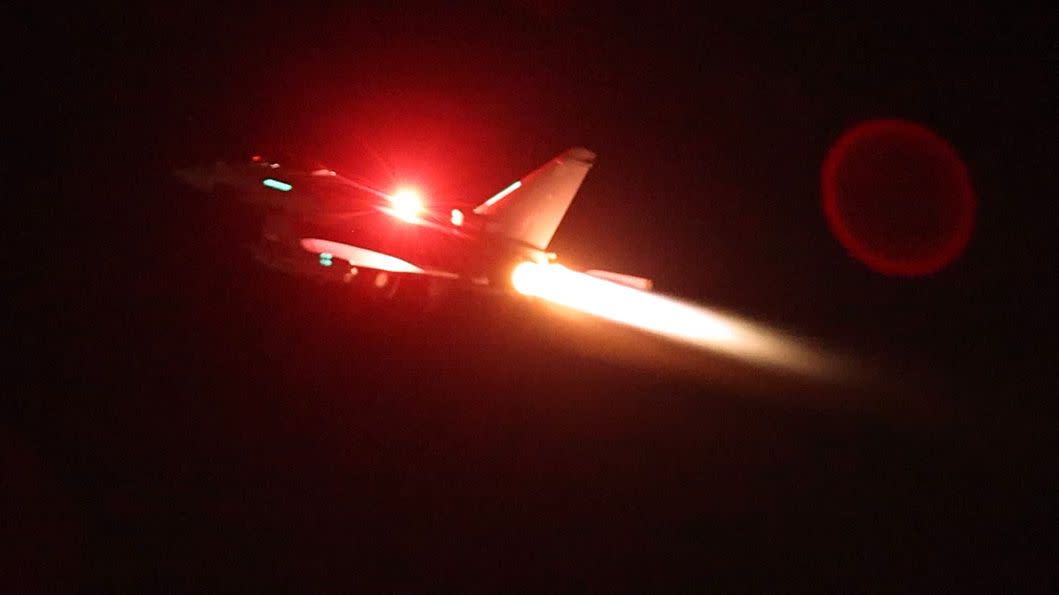
January 9: drone and missile war on the Red Sea
Thursday’s bombardment followed a large-scale night attack targeting U.S. and British warships on the Red Sea on Tuesday. The Houthis hurled 18 kamikaze drones laden with explosives, two anti-ship cruise missiles (skimming low over the surface of the ocean), and an anti-ship ballistic missile (approaching from above at supersonic speeds) at the vessels patrolling the Red Sea under the auspice of an operation known as ‘Prosperity Guardian.’
However, the concerted attack effort achieved little more than a multi-million dollar fireworks display.
The Royal Navy’s Type 45 destroyer HMS Diamond accounted for seven drones, using her Sea Viper system (the British/French Aster 15 and 30 missile) and close defense guns—indicating that some of the drones did get close. F/A-18 Super Hornet fighter jets from the carrier Dwight D. Eisenhower shot down additional incoming munitions.

Polishing off the remainder were U.S. Navy Arleigh Burke-class destroyers Gravely, Laboon, and Mason, bristling with a half-dozen different types of surface-to-air missiles guided by fire control radars networked together via their shared Aegis Combat Systems.
The U.S. Navy’s growing tally of ballistic missile kills
Compared to the surface-skimming cruise missiles dominating anti-ship warfare since the 1960s, ballistic missiles leap towards space in a long arc (in some cases exiting the atmosphere) and plunge back downwards at supersonic speeds.
As detailed in this Popular Mechanics feature, anti-ship ballistic missiles (ASBMs) able to home in on moving ships were rare and exotic weapons that never before used in combat before a missed Houthi missile attack last November. But more would soon fly over the Red Sea.
Indeed, the ASBM downed on January 9 was actually the seventh shot down by U.S. warships in the last few weeks, going by the count of the Pentagon’s Central Command.
Notably, on December 30, 2023 at 8:30 PM, the USS Gravely reportedly shot down two ASBMs while coming to the aid of the Maersk Hangzhou after the latter was struck by a missile of undetermined type.
The day before (between 5:45 and 6:10 PM) her sistership, the Mason, downed another ASBM, along with a drone heading towards a concentration of 18 commercial vessels.
Prior to that, on December 26, the destroyer Laboon (with assistance from Eisenhower’s F/A-18 fighters) downed three Houthi ASBMs, as well as twelve drones and two land-attack cruise missiles. Presumably, the latter were headed towards Israel, which has shot down Houthi missiles using its Arrow III air defense system and F-35 Lightning stealth jets.
Unless an earlier ASBM intercept went unreported by Central Command, Laboon was the first ship to ever shoot down an anti-ship ballistic missile in combat.
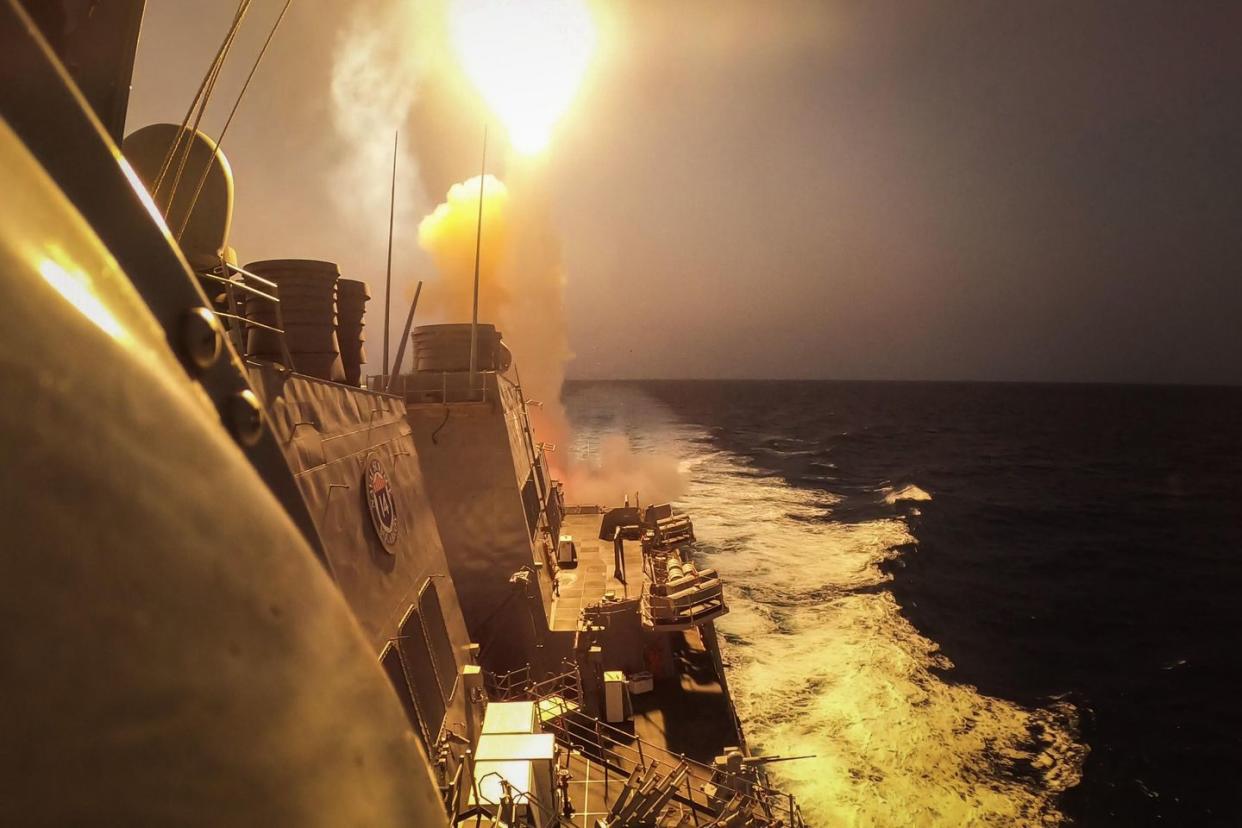
There’s not much information on which means were used for the U.S. Navy air defense kills, though it’s known that Mason used SM-2 missiles to down Houthi drones and land-attack cruise missiles bound for Israel in October. It’s still unknown whether the destroyers made first combat use of SM-3 and SM-6 missiles, which were specifically designed for ballistic missile defense, to defeat the Houthi attacks.
Ballistic missile hits and misses on Red Sea shipping
For every Houthi ASBM shot down, another flat-out missed—like one that plummeted into the Gulf of Aden at 2 a.m. on Thursday within sight of commercial shipping. Before that, two Houthi-launched ASBMs splashed into the Red Sea within sight of several commercial vessels on January 2, two were launched on December 23, and one (targeting Maersk Gilbralter north of Bab-el-Mandeb strait) was launched on December 14.
On December 3, an ASBM that launched at 9:15 AM and was targeting the Unity Explorer “impacted in vicinity” (which sounds like a near miss). However, from 12:35 to 4:30 PM, Unity Explorer and bulk carriers Number 9 and Sophie II were all subsequently hit by missiles of unspecified type. Fortunately, all took only minor damage.
On one occasion, a Houthi ASBM was confirmed to have struck a ship—on Dec. 15, container ship Palatium 3 was struck on its port side at 10:40 AM by one of two ASBMs launched, knocking a shipping container overboard and causing a fire that was contained by the crew.
Later, the chemical/oil tanker Swan Atlantic—loaded with vegetable oils—was attacked by both a drone and ASBM. One of the two hit, damaging the vessel’s water tank and causing a small fire.
Several other reports of missile hits don’t make it clear whether they involved cruise or ballistic missiles. But the unifying factor between all of these strikes is that none resulted in loss of lives or ships.
The underwhelming outcomes aren’t that surprising: during the 1980s-era “Tanker War” between Iran and Iraq, large commercial ships struck by cruise missiles proved remarkably durable. This is largely thanks to their transparent bulk and small crews, as compared to slender warships densely packed with hundreds of crew and explosive missiles, shells and fuel.
Bear in mind that the navigation, communication and guidance technology necessary to make ballistic attacks somewhat practical against ships at sea have only recently evolved. As a result, these weapons remains very challenging to employ, as the moving vessel must fall within the narrow field of view of the missile’s seeker once it begins its terminal plunge.
Still, China and Iran have built up ASBM inventories because these land-based weapons can safely threaten U.S. warships from a distance, and potentially from an angle and speed their defenses might struggle against.
The Houthis claim to field a half-dozen different types of ASBMs—most apparently derived from similar Iranian weapons, but with substitutions for local production. These most recently include the 10-meter-long Asef missile and slenderer, 6-meter-long Falaq-1 missiles, with claimed ranges of 250- and 85miles respectively. Both were seemingly derived from the Iranian Khalij Fars ASBM.
The Houthis also developed the Moheet ASBM by converting old Soviet S-75 anti-air missiles, a Tankil missile based on the Iranian Ra’ad-500 with a claimed range of 310 miles, and two other short-range ASBMs. However, whether all of these are in use and operational is unclear.
Some, however, insist that the Houthi attacks didn’t actually involve true anti-ship ballistic missiles, but rather ordinary land-attack ones. A military source told Naval News that the Houthis first immobilize a targeted civilian ship via threats over the radio, then obtain the immobile vessel’s geographic coordinates by drone for subsequent targeting by a short-range land-attack ballistic missiles, or SRBM. These usually miss anyway, due to ships drifting and SRBMs not being very accurate.
This could explain the low accuracy of Houthi ballistic strikes, but not apparent attempts to target these weapons at moving U.S. warships. Perhaps both genuine ASBMs and ordinary ballistic missiles were used.
Anti-ship ballistic missiles: not as scary as thought?
The growing ASBM threat had been on the U.S. Navy’s radar, spurring the development of capable ballistic missile defense weapons like the SM-3 and SM-6 missiles. It also likely spurred on continual upgrades to the ever-evolving Aegis Combat System, which networks together U.S. warships enabling cooperative engagements and rapid, coordinated responses to incoming threats.
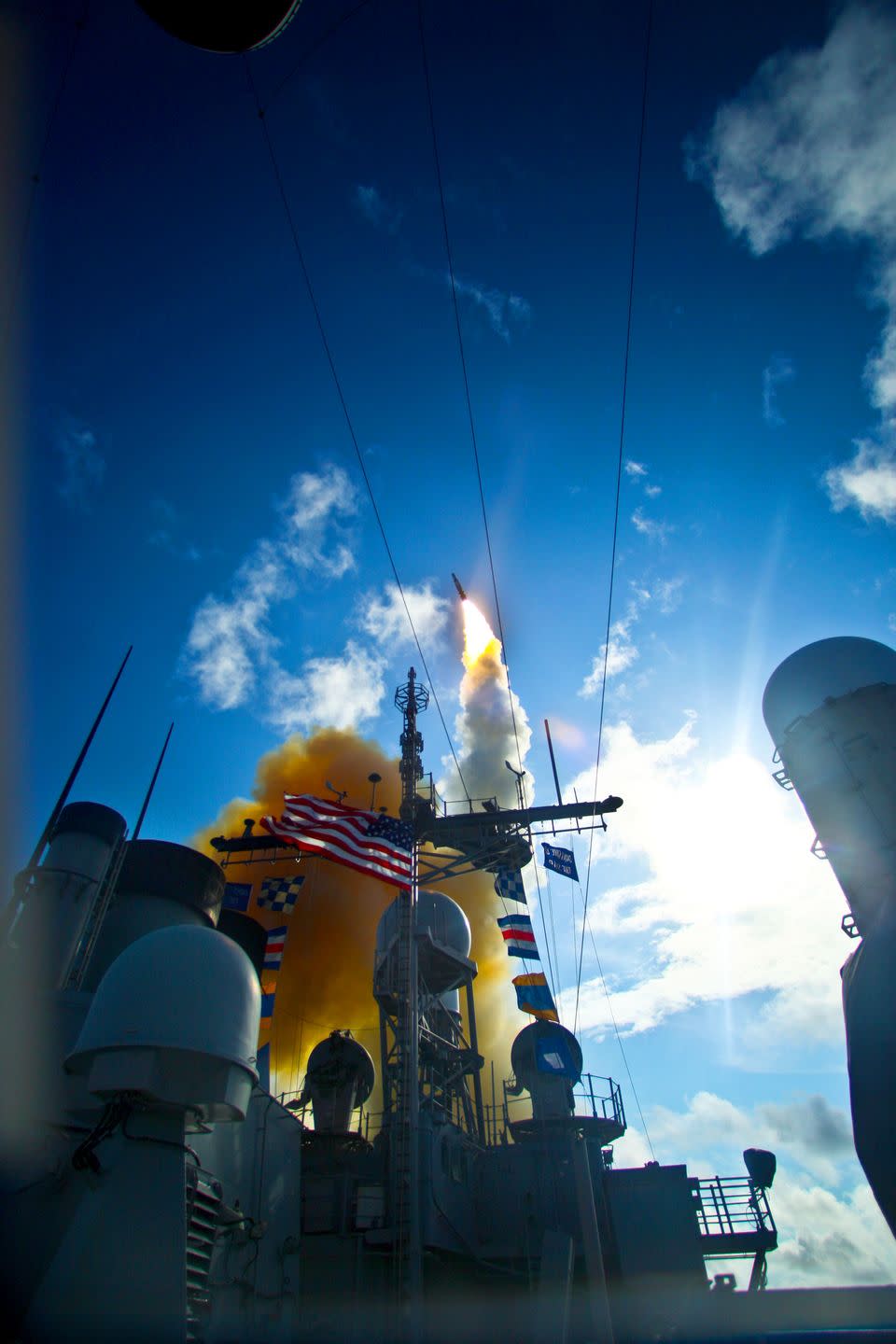
Notably, ASBMs are in no way stealthy weapons—their high-altitude trajectory and speed make them very indiscrete to radar and infrared sensors, and their prominent launch flash may also be detected by infrared-sensors on the same SEWS infrared surveillance satellites used to warn of nuclear missile launches.
The Houthi’s Red Sea campaign has inadvertently created conditions for operational testing of U.S. Navy missile defenses—and overall, this ‘battle laboratory’ suggest those defenses work well against Houthi ballistic missiles.
On the flipside, Houthi ballistic missiles have proven capable of hitting their targets, and U.S. warships have not always been close enough to shoot down missiles streaking towards civilian ships. So, the threat can’t be blithely dismissed.
It’s also important to not over-extrapolate from the performance of Houthi missiles in the Red Sea to other contexts—particularly China and the Pacific Ocean.
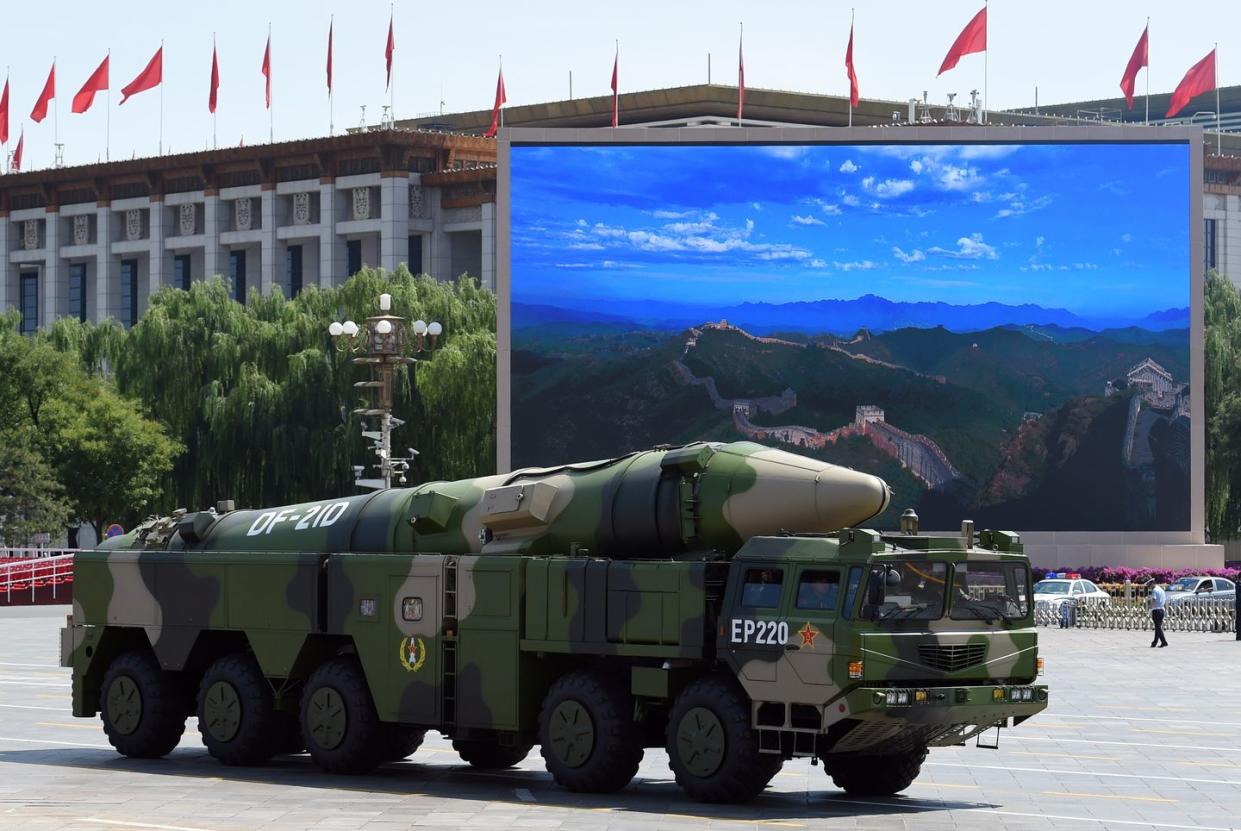
On the one hand, the short distances (dozens of miles) and confined geography of the Red Sea make it unusually easy for the Houthis to acquire targets, despite their limited maritime surveillance capability, using coastal radars and (perhaps) intel from the Iranian surveillance ship Behshad.
On the other hand, the shorter-range Houthi ASBMs are easier targets due to having slower peak velocity—likely around Mach 3 or 4—than Chinese DF-21D ASBMs designed to traverse up to 900 miles at Mach 10.
A wealthier adversary could have much better surveillance capabilities, the ability to provide course-corrections for missiles midflight, and enough launchers to fire many more munitions simultaneously in an attempt to overwhelm the air defenses.
The Houthi Red Sea missile war demonstrates that ballistic missiles have arrived as naval warfare weapons, but also offers a datapoint suggesting technologies developed by the U.S. Navy to counter the ballistic threat are on the right track.
You Might Also Like
